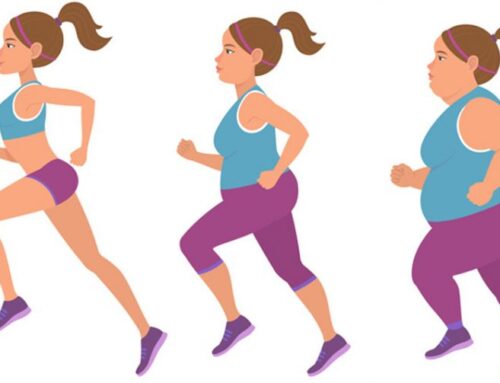Most people experience knee pain at some point in their lives. Sports, exercise, and other activities can cause muscle strains, tendinitis, and more serious injuries to ligaments and cartilage.
It’s difficult to pinpoint the exact number of people who experience knee pain over their lifetime, but we do know the rates of how many people experience pain severe enough to turn to knee replacement surgery: In 2017, 966,000 knee replacement surgeries were performed in the United States.
The severity of knee pain can vary widely and depends on factors such as the cause and your age. For some, knee pain can be so severe that it limits daily activities. For others, mild knee pain may be a chronic hindrance to the active lifestyle they desire. The location of knee pain can also vary.
For example, the Clinical Journal of PainTrusted Source found that the most commonly reported location of knee pain is in the middle of the knee, in the joint that connects the thighbone to the shinbone. The second most common area people experience knee pain is in the kneecap area. Some people experience a combination of the two.
Here are some of the most common conditions and injuries that cause severe knee pain.
Knee ligament injuries
If you have an injury to the ligaments in your knee, you can experience knee pain. The ligaments are what connect your thigh bone (femur) to your lower leg bones (tibia and fibula). They hold these bones together and keep the knee stable.
Knee ligament sprains and tears are very common sports injuries, and can occur to the anterior cruciate ligament (ACL), posterior cruciate ligament (PCL), and medial collateral ligament (MCL).
Knee ligament injuries may also occur from high-energy accidents, such as a car crash.
The ACL ligament is the main ligament that runs through the middle of the joint between the thighbone and shinbone. ACL ruptures are the most common type of ligament injury in athletes.
ACL tears can occur as a result of an injury from movements that occur in sports, such as:
- starting or stopping suddenly
- shifting directions quickly
- jumping and landing incorrectly
- colliding with another person
Symptoms of a knee ligament injury can include:
- sudden, severe pain in the knee
- pain that persists while walking
- a “popping” noise in the knee
- the knee abruptly “giving out,” causing you to fall down or feel unstable while walking
- swelling within 24 hours after the initial injury
Any ligament injury can result in severe knee pain and could require surgery.
Meniscus tears
Other injuries, including tears, can take place in the cartilage of the knee.
Cartilage is a semi-hard (tough, but flexible) tissue that covers the end of your bones. In addition, knee cartilage also includes the two menisci on either side of the joint: the medial meniscus, located on the inside of the knee, and the lateral meniscus, positioned on the outside of the knee.
A meniscus tear is a common injury, and typically requires surgery. Unlike a ligament injury, which can happen in a variety of ways, a meniscus tear typically occurs as a result of one single movement. For instance, a sudden twist or turn can cause this knee cartilage to tear.
Meniscus tears are more common as you age, because the cartilage gets weaker and thins out, so it’s more likely to tear. Symptoms of a cartilage tear in the knee can include:
- a “popping” sound
- knee pain
- initial pain and discomfort (though still able to walk)
- worsening pain and stiffness days after the injury
- knee “giving out”
- knee catching or locking
Arthritis of the knee
Arthritis is a condition that causes inflammation and pain in joints in the body, but it most often occurs in the knee. Arthritis is a chronic condition that can get worse over time and eventually require surgery.
The three most common types of arthritis are rheumatoid arthritis, post-traumatic arthritis, and osteoarthritis.
Symptoms of arthritis in the knee include:
- stiffness and swelling in the knee
- difficulty bending the knee fully
- knee pain
Rheumatoid arthritis of the knee
Rheumatoid arthritis is an autoimmune condition that causes the tissue around the joint to become inflamed and thickened. Chronic inflammation often leads to damage and loss of cartilage.
Rheumatoid arthritis occurs in about 0.6 percent of the U.S. population and is two to three times more common in women.
Symptoms of rheumatoid arthritis are similar to other types of arthritis in the knee:
- stiffness
- knee pain
- knee swelling
- difficult bending the knee fully
Post-traumatic arthritis
Post-traumatic arthritis can result after a serious knee injury, including bone fractures and ligament tears. Injuries such as a broken bone can wear down the joint surface and cause arthritis over time.
Knee injuries can damage the cartilage in your knee as you get older, leading to the following symptoms:
- pain
- swelling
- stiffness
Osteoarthritis of the knee
The most common type of arthritis is osteoarthritis, which is a progressive wearing of the cartilage in the knee joint. It occurs more frequently in people age 50 and older.
After 50, the impact of osteoarthritis can worsen due to accumulated use and the wearing down of cartilage that occurs with age.
Osteoarthritis is often the result of bone rubbing on bone, and yes, that’s as painful as it sounds. Osteoarthritis can also be caused by age, weight, genetics, previous injuries, infections, illness (such as a tumor or gout), and certain occupations, such as construction and manufacturing.
Osteoarthritis of the knee symptoms include:
- knee pain
- limited range of motion
- stiffness of the knee
- swelling of the joint
- knee tenderness
- deformity and weakness
- pain that worsens over time
According to a 2018 study in Arthritis Research & Therapy, knee pain that lasts more than 1 year is commonly associated with osteoarthritis.
Diagnosing knee pain
Doctors diagnose arthritis and other knee problems using X-rays and a physical evaluation. You will be asked about your pain level, knee flexibility and function, activity levels, any past injuries or conditions, and your family history (such as if anyone in your family has arthritis).
Medical professionals will also use special tests to identify the type of arthritis affecting your knee. These tests could include:
Bloodwork
Bloodwork can check for an anti-CCP antibody, which can indicate rheumatoid arthritis. Other antibodies can be related to a more widespread disorder, such as lupus, with inflammation throughout the whole body.
Fluid tests
Doctors can have fluid drawn from the actual knee joint to examine it. If the fluid has uric acid crystals in it, it can indicate that gout is causing the inflammation and pain. The presence of bacteria indicates an infection is the source of these symptoms.
Imaging tests
X-rays can help identify signs of arthritis, such as if the space between the bones is narrower, if there are any bone spurs, or if the joint isn’t aligned correctly.
CAT scans and MRI scans produce more detailed images of the bones and soft tissues, respectively, so they are used more to diagnosis injuries and unexplained swelling. For instance, if your doctor suspects a cartilage or ligament tear, they will most likely order an MRI scan.
Treating knee pain from arthritis
Knee pain usually becomes worse as arthritis progresses. Many people with severe pain from arthritis choose to have surgery to relieve their symptoms and help repair the joint.
But surgery isn’t right for everyone. Some of the more conservative options for treating knee pain from arthritis include medication and at-home strategies like exercise.
The exact treatment plan that’s recommended for your knee pain will depend on factors such as severity of your pain, your age, your activity levels, and any other medical conditions you have.
Typically, your doctor will try the least invasive type of treatment, such as weight loss and medication, and then move down the line to consider surgery.
Because there are many considerations before turning to surgery, it’s crucial to discuss and explore all treatment options with your doctor.
Why did my knees suddenly start hurting?
Sudden knee pain can result from a traumatic injury, stress injury, or flare-ups from another underlying condition. Remember that it doesn't take a severe injury to cause a partial tear of your ligament or to wear down your cartilage.
At-home treatments
- Weight loss. Weight loss may help improve your knee pain because it lessens the amount of weight on your knee joint. Osteoarthritis Research Society International (OARSI) guidelines recommend losing 5 percent of your weight over a 20-week period.
- Movement. If you have osteoarthrosis, performing strengthening and stretching exercises for your knee is primarily about improving your function and mobility. This can help relieve pain and stiffness. Both land-based exercise, such as yoga, and water-based movements, such as aquatic aerobics, can be helpful.
- Heat and cold therapy. A physical therapist can help you learn how to practice hot/cold therapy at home to relieve pain and stiffness.
- Assistive devices. If you have limited mobility as a result of your knee arthritis, working with a physical or occupational therapist can help you find tools to use in your everyday life. For instance, you could get fitted for a custom knee brace or walker.
- Natural remedies. Natural remedies can include things like supplements, essential oils, and acupuncture. Acupuncture in particular is being studied as a helpful and effective option for arthritis knee pain relief.
- Pain relievers. Nonsteroidal anti-inflammatory drugs (NSAIDs) such as ibuprofen (Advil) or aspirin (Bufferin) are recommended to help most individuals who have knee osteoarthritis relieve pain and inflammation. Talk with your doctor about an appropriate at-home dosage plan.
Medications and steroid injections
- Corticosteroids. The most effective type of medicine for knee arthritis, triamcinolone acetonide (Zilretta), is the only FDA-approved medication to treat osteoarthritis of the knee. This is a corticosteroid injected into your knee that releases medicine slowly over a 3-month period. The slow release of the medicine has been found to relieve pain and swelling and reduce some of the negative side effects of steroids, such as increased blood sugar.
- Topical pain relievers. The Arthritis Foundation recommends that people who have knee arthritis try topical pain relievers — which is medicine you apply directly on the skin, instead of taking by mouth — because it can help relieve pain without as many side effects.
- Hyaluronic acid injection. Although more research on this remedy for knee arthritis is needed, it has often been used to help supplement fluids in the knee joint to decrease pain.
Surgery
The two primary types of surgery to treat knee arthritis are osteotomy and knee replacement.
Osteotomy is mostly used in younger, more active people as a way to delay needing a joint replacement. The surgery involves cutting the bones and realigning them to help improve function and decrease pain.
If the arthritis is only located in one area of the knee, a doctor can perform a partial knee replacement to replace only the affected area. If the whole knee is involved, a total knee replacement can be performed.
The takeaway
There are many different causes of knee pain, ranging from injury to medical conditions. But no matter what kind of knee pain you’re dealing with, have your knee evaluated by a doctor to make sure you don’t have a serious injury or disorder causing the pain.
It’s important to treat any injury or condition you may have that is causing your knee pain. It’s also important to recognize that you don’t have to live with knee pain — a health provider may be able to recommend tools to relieve your pain, such as physical therapy or medication
- Exercises for Knee Arthritis(Opens in a new browser tab)
- PHYSIOTHERAPY(Opens in a new browser tab)
- Everythings about Orthotics(Opens in a new browser tab)



